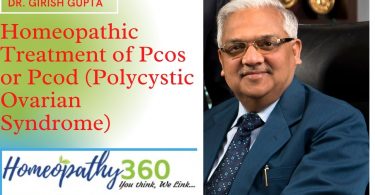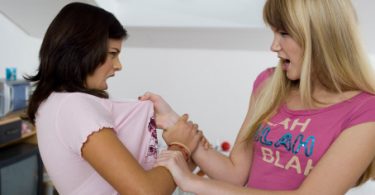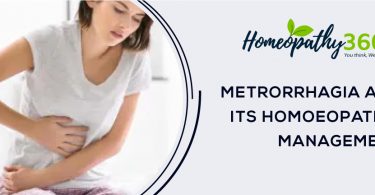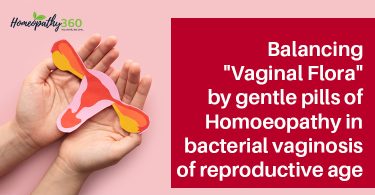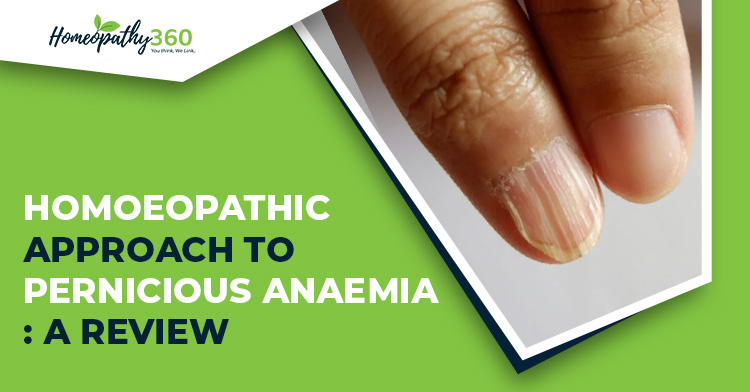
Abstract: In the recent years, considerable increase in the number of cases of pernicious anaemia has been recorded. Its prevalence increases with the age especially over the age of 60 years. It is one of the autoimmune conditions causing destruction of parietal cells, which is treated by administration of vitamin B12 intramuscularly or through oral supplementation. But this is not the curative treatment as the patients will have to continue with similar treatment throughout the life. As homoeopathic medicines treat the individual and not the condition or diseases, they help body in establishing the normal secretion of intrinsic factor and hence correct the deficiency. Skillful selection of the rubrics from various repertories, suitable for such conditions play an important role in prescribing medicines to get the best result. Few of such repertories are discussed in this review.
Keywords: Pernicious anaemia (PA), vitamin B12, homoeopathic approach, homoeopathic medicines, repertory, rubrics, Biermer’s disease
Abbreviations: Pernicious anaemia (PA), red blood cells (RBCs), methylmalonic acid (MMA)
Introduction : Pernicious anaemia is an organ specific autoimmune disorder resulting from impaired uptake of vitamin B12 due to deficiency of intrinsic factor. This deficiency of intrinsic factor is a result of loss of parietal cells in gastric mucosa. Most commentators believe that in the modern world around 10% of the population is deficient in this essential vitamin, however, it is impossible to say in how many people deficiency will be caused by pernicious anaemia.[1-6] . The aim of studying this topic is to review the literature of the condition from homoeopathic point of view.
2.Pathogenesis: It is the result of an autoimmune reaction against the gastric parietal cells for which exact cause is unknown. Abnormal auto antibodies such as anti-parietal antibody and anti-intrinsic factor antibodies are formed which leads to low absorption of vitamin B12.
Vitamin B12 helps in the production of RBCs and keep neurons healthy. If goes untreated for long period, deficiency leads to permanent damage to nerve cells or degeneration of spinal cord and other organs. The incidence of pernicious anaemia is high in patients with other autoimmune diseases like graves’s disease, vitiligo, myxoedema, thyroiditis or family history of these or of pernicious anaemia.
3. Clinical features: . Anaemia
· Glossitis
· Neurological abnormality–neuropathy, subacute combined degeneration of the spinal cord,
· Cerebrum: dementia, optic atrophy
· Peripheral nerves: glove and stocking paraesthesia, loss of ankle reflex Gastrointestinal manifestations–anorexia, diarrhoea, weight loss, dyspepsia, etc.
4. Diagnosis:
The condition is diagnosed usually based on:
4.1 History Medical Family
4.2 Physical examination
4.3 Investigations Haematology
· Complete blood count: Macrocytic anaemia with leucopenia and thrombocytopenia if seen.
· Blood film: shows oval macrocytes with variation in RBCs size.
· Bone marrow aspirate: hypercellular with erythroid hyperplasia and increased early erythoid precursors seen.
Biochemistry
· Low levels of serum vitamin B12
· High levels of homocysteine and methylmalonic acid (MMA) is a sign of pernicious anemia Immunology
· Parietal cell and intrinsic factor antibodies are confirmatory findings in pernicious anaemia.
5. Treatment
In severe anaemia, intramuscular administration of vitamin B12 is given as initial doses of hydroxocobalamin is 1000µg once a month or 1000µg of cyanocobalamin once in 3 months indefinitely. In less severe cases, vitamin B12 is given orally at 1000- 2000µg of orally, daily for 1 month. Supplementation of vitamin B12 has to be continued throughout the life in case of pernicious anaemia. Supportive therapy includes blood transfusion, treatment of infection and physiotherapy when nervous system is involved as per presentation.
6. Homoeopathic approach
As stated by Dr Hahnemann in aphorism 177 where he has guided regarding the treatment of such one-sided diseases, he writes, “in order to meet most successfully such a case as this which is of very rare occurrence, we are in the first place to select, guided by these few symptoms the medicine which is our judgement in the most homoeopathically indicated”. [7] Thus, he meant to say that it is not possible to prescribe constitutional medicine in each and every case especially in one sided diseases or in advanced pathological conditions, where we can’t get the clear picture of the patient, and we have to prescribe the medicines based on the few presenting symptoms. In such cases it is inevitable to take the help of clinical repertories to get the group of medicines. In order to arrive to the group of medicines with the help of clinical repertories, symptoms are converted into rubrics. Group of medicines are further narrowed down based on the modalities and concomitants, with reference to Materia medica.
6.1 Repertorial approach: Very few repertories have given this condition as a direct rubric.
1. Boericke’s Repertory [8]: Section–Generalities (page 1336) Anemia- Pernicious – Ars, Phos, Picr.acid, Thyr
2. Murphy’s Repertory [9]: Section-Clinical (373page) Murphy’s concept of totality is based on clinical as well as classical approach hencepathological conditions or rubrics are directly given in this repertory. Anemia, pernicious, anemia: Ars, Calc, Carc, Cort. H, Mang, Nat. M, Phos, Pic Acid, Thyr, Trinit hereditry, family, in–Carc
3. Synthesis 9.1[10] – Section – Generals (Page1895) Anemia – pernicious – Ars, Calc, Carc, Crot-H, Ferr-Pic, Mang, Med, Nat-M, Phos, Pic-Ac, Rad-Br, Thyr family in – carc
4. Complete Repertory [11] – [WU8] Section – Blood Anemia – production of red cells impaired: Pernicious –Ars, Alpi, Cadm-s, Calc, Calc-p,Carc, Cean, Chloram, Chorpr, Crot-h, Ion-rad, Lyc, Mag, Menth-pu, Med, Nat-m, Phos, Pic-ac, Pitu-a, Stann, Thyr, Trinity, X-ray Pernicious: Hereditary – carc
5. Clarke’s Clinical Repertory to the Dictionary of Materia Medica[13] (page 36) Anemia, Acute pernicious – phos, pi.x, thyr
6. Phatak’s Repertory [14] – (page11) Anaemia – pernicious – Ars, phos, Pic-ac, thyr
7. Knerr’s Repertory [15] –Section –Chest (page -1307-8) Blood – Anaemia –progressive Pernicious – pic-ac Blood – Anaemia – pernicious, in constitutions broken down by gonorrhoea, syphilis, alcohol, etc., tendency to haemorrhage from gums, mucous membranes and skin, blood non-coagulable- croth
6.2 Therapeutics Arsenicum album: This being a direct poison to the red blood corpuscles takes first rank in cases of pernicious. It produces the destructive inflammation of every part of body where mucous membrane is found. The changes produced in the blood are most marked. Arsenic disintegrates the blood corpuscles. According to Schmitt, it retards the waste of RBC. Gradual loss of weight due to impaired nutrition. Burning pain coupled with rapid progress toward gangrene. Gradual decrease of appetite. Paleness which is seen due to destruction of RBC. Impaired muscular power. Face swollen, pale, cachetic, with sucken eye and cold sweat. Tongue dry, ulcerated with burning. Easily bleeding gums. Great exhaustion after slight exertion. Liver and spleen enlarged and painful. Anasarca and ascites. Skin dry, rough, scaly. Sleep disturbed, anxious and restless with palpitation. [4, 16, 17, 18, 20] [WU9]
Picricum acidum: Progressive pernicious anaemia. The extreme prostration of pernicious anaemia, with a heavy tired feeling all over the body, burning pains along the spine and aggravation from excitement indicate this remedy. Shallow complexion. Neurasthenia. Anaesthesia of legs as if one has on elastic stockings. Muscular debility. Aversion to food. Great weakness especially in legs. Feet cold. [4, 8, 16, 17, 20]
Phosphorus: It brings about important change in the blood cells esp. RBC. Cells become smaller, and even change their shapes. It causes dissolution of RBCs. It separates the haematin and globulin. It causes disorganisation of blood. Polycythaemia. Palpitation and anxiety of heart. Petechial spots in the skin. Purpura heamorrhagica. Remarkable paleness in the skin and mucous membrane. Sickly complexion with blue rings around the eyes. Tongue dry, smooth, red or white. Hunger soon after with frequent waking. [8, 17, 18, 20]
Crotalus horridus: This venom causes disorganisation of blood leading to haemorrhages and jaundice. Blood decomposition. Tongue fiery red, dry in centre, smooth and polished. Vertigo with weakness and trembling. Face yellow with death like pallor. Ulcerations of stomach with constant nausea and vomiting. Palpitation with trembling feeling of heart. Feeble Pulse. Patient is irritable with deranged state of vitality. Tendency to syncope. Easily tired by slight exertion. Old age nutritional troubles. Purpura heamorrhagica. Skin is cold and dry. [8, 16, 17, 18]
Thyroidinum: In goitrous subjects who have nervous weakness, palpitation and chilliness. It produces anaemia, emaciation, muscular weakness, tingling sensation and paralysis. Tachycardia, weak and frequent pulse. Persistent headache. Heart’s action weak with numbness of fingers. Coldness and cramps in extremities. Aching of lower limbs. Itching without eruptions. Peeling of the skin of lower limbs. Oedema and trembling of lower limbs. Tired and irritable. Flushed face with dry, red burn lips. Amenorrhoea in females. Peeling of skin of lower limbs. [21, 18[WU10] ]
Carcinosinum: It is more useful in cases where family history of pernicious anaemia is found. Palpitation even a short walk exhaust, can feel the heart and hear it on lying down. [19
7. Conclusion : From the observations made during this review it is very clear that we have good number of remedies which can create wonders in treating the patients of pernicious anaemia. Holistic approach of homoeopathy is very useful in treatment of such conditions as it not only removes the symptoms of the diseases but cures the disease completely. The above study indicates the usefulness and application of remedies like Arsenicum album, Picricum acidum, Phoshprous, Crotalus horridus and Thyroidinium in the treatment of pernicious anaemia whereas Carcinosinum is more useful when there is family history of pernicious anaemia. There are very few repertories which have considered this condition and given in the direct rubric form which include not many medicines under them. Also, the therapeutics about the medicines like Thyroidinum and Carcinosinum is not found in detail and there is need for evidence-based study about the effectiveness of these medicines in pernicious anaemia. Hence, there is need for the clinical verification of more medicine which can be useful in pernicious anaemia so that our repertories are updated with clinical conditions which is the need of the day.
References
1. Walker BR, Nicki R Colldge, Sturat H Ralston, Ian D Penman. Davidson’s Principle and Practice of Medicine. Edited by 22nd Edition Churchill Livingstone Elsevier; 2014, 1025.
2. Axford J, Chris O’ Callaaghan. Medicine 2nd Edition. Blackwell Publishing Company. 2004, 1031- 1032.
3. 3. Mohan H. Textbook of Pathology. 3rd Edition. Jaypee Brothers Medical Publishers (P) LTD, New Delhi. 2000, Reprint 2006, 150.
4. Dr. Balan MS. Treat Vitamin B12 deficiency through Homoeopathy. Homoeopath the friend of Health; Dr. N.V. Sugathan, Tamil Nadu, Sept 2018; 6(9):25-27.
5. Pernicious Anaemia Society . Available: https://pernicious-anaemiasociety.org/b12deficiencyandperniciousanaemia/ [Internet]2018.
6. Pernicious Anemia U.S. Department of Health and Human Services, NIH- National Heart, LUNG and Blood Institute; . Available from: https://www.nhlbi.nih.gov/healthtopics/pernicious-anemia; [Internet] [cited on 4th Nov 2018].
7. Hahnemann S. Organon of medicine 6th Edition, translated with Preface by William Boericke. Indian books and Periodicals Publishers, New Delhi; Reprint Edition August. 2016, 214.
8. Boericke W. New Manual of Homoeopathic Materia Medica & Repertory. Ninth edition, Indian books and Periodicals Publishers, New Delhi; Fourth reprint edition December, 2015, 103-108, 307-309, 649-650, 637-642, 1336.
9. Murphy R. Homoeopathic Medical Repertory. Third revised edition, B. Jain Publishers (P) LTD New Delhi; First Indian Edition 2010, 6th impression. 2017, 373.
10. Schroyens F. Augmented Clinical Synthesis Edition 9.1. B. Jain Publishers (P)LTD New Delhi Indian edition August 2016, 1895.
11. Software: Mind Tecnologies. Zomeo Ultimate LAN (Hompath 11 Zomeo LAN)
12. Software: RADAR opus Program and Databases Version 1.38 (DVD ROM)
13. Clarke JH. Clinical Repertory to the Dictionary of Materia Medica. Indian books and Periodicals Publishers, New Delhi; Reprint Edition 2008, 36.
14. Dr. Phatak SR. Concise Repertory of Homoeopathic Materia Medica. 2nd Edition B. Jain Publishers PVT. LTD, New Delhi; Reprint Edition. 1996, 11.
15. Knerr CB. Repertory of Hering’s Guiding Symptoms of our Materia Medica. First Edition 2006, New Delhi; 9th impression. 2013, 1307-1308.
16. Allen HC. Keynotes and characteristics with comparisons of some of the leading remedies of the Materia Medica with Bowel Nosodes. 8th edition Jain Publishers (P) LTD, New Delhi; 48th impression. 2016, 247.
17. Burt WMH. Physiological Materia Medica. 3 rdEdition. B. Jain Publishers (P) LTD, New Delhi; 14th impression 2015; 18:116-136, 353-360, 689-715.
18. Dr. Phatak SR. Materia Medica of Homoeopathic Medicines. B. Jain Publishers (P) LTD, New Delhi: Reprint edition 1993, 69-74, 220-223, 460-465, 598- 600.
19. Tarkas IP, Kulkarni AK. A Select Homoeopathic Materia Medica Part 1.3 rd Edition 2000, Indian books and Periodicals Publishers, New Delhi; Reprint edition. 2006, 150.
20. Lilienthal S. Homoeopathic Therapeutics. Indian books and Periodicals Publishers, New Delhi; Reprint edition. Oct 2016, 27.
21. Mathew K G, Praveen Aggarwal. Medicine Prep Manual for Undergraduate. 5 th Edition Reed Elsevier India Pvt. Ltd. 2015, 16.
22. Kansal K, Kaushal R. Textbook of Medicine with Homoeopathic Therapeutics. 2nd revised and enlarged edition 2004.B. Jain Publishers (P) LTD, New Delhi; 7th impression. 2013, 381-382.
23. Pernicious Anaemia Society. 2022. Available at: https://pernicious-anaemiasociety.org/b12deficiencyandperniciousanaemia
[WU1] NO citations
[WU2] Reference 23?? Please correct it to 7th number reference. Also, please confirm if it’s a copyright image
[BT3] Yes its copyright image.
[BT4]
[WU5] NO citations
[WU6]Citations need to be superscripted at the end of the paragraph
[WU7] Reference number to be correct in sequence
[WU8] 11 number reference is missing
[WU9] 16 reference is not there first
[WU10] 21 reference is missing


